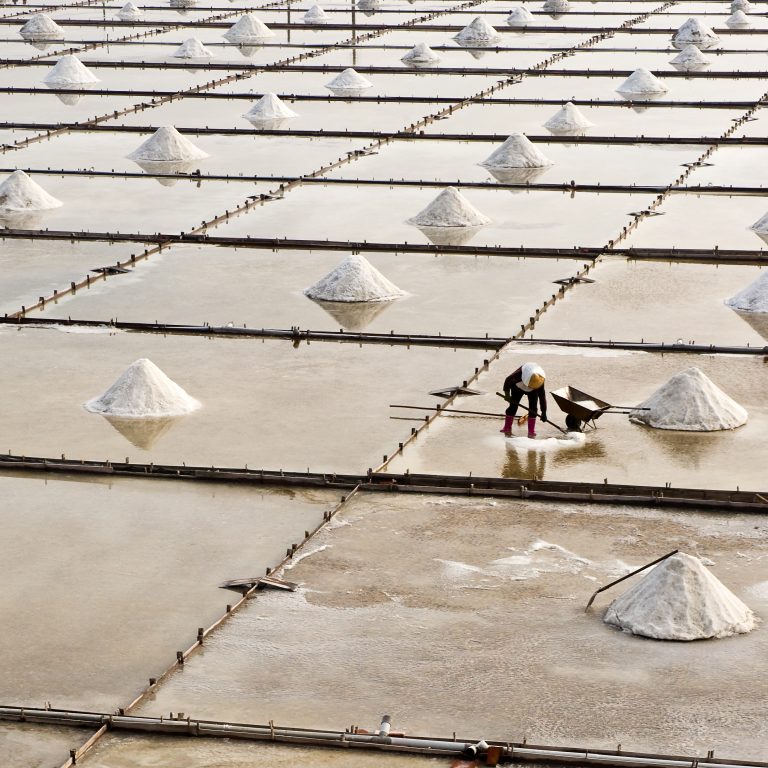Temp For
Salt can be obtained from the earth or from naturally occurring saltwater.
Solution mining involves digging a well deep into an underground salt deposit, pumping in water to dissolve the salt crystals, and then drawing the brine back up to the surface. The process doesn’t produce much noise, airborne pollutants, or groundwater contamination. (The worst-case scenario would be a cave-in, although that’s highly uncommon.) The processing method —known as vacuum pan refining—is the most costly and energy-intensive way to make salt, but it creates a very pure product that’s nearly 100 percent sodium chloride.
Most of the salt for highway ice removal is instead obtained by physically mining it out of the earth in its mineral form.

Salt can also be obtained by solar evaporation, in which seawater (or briny lake water) is pumped into a series of large, shallow ponds and left to evaporate naturally. The process is very slow—it can take years—but it requires very little fossil-fuel input. With large-scale operations, wildlife issues may come into play, while ponds can provide sanctuary for certain wetland species, like flamingos and other birds. The liquid that remains after the solar evaporation process—known as bitterns— in large, concentrated amounts can be harmful to fish and other aquatic organisms. Washing and refining can be as energy-intensive as vacuum pan refining. But most gourmet sea salts are harvested from the evaporation ponds—sometimes with hand tools—and then treated very minimally before they’re packaged and sold. Friend of the Sea has developed Sustainable Sea Salt standards and it is in the process of developing standards for Sustainable Salt from solution mining.
The Standard
Friend of the Sea criteria for sustainable Salt require:
- Social and environmental management system in place
- Legal compliance
- Conservation of the ecosystem
- Protection of wild flora and fauna
- Appropriate use of hazardous substances
- Appropriate water resources management
- Outputs control
- Waste management
- Energy management
- Social accountability
- Economic sustainability
Apply
Would you like to receive a quotation for Friend of the Sea audit and royalties to use our logo?
Please fill out the online Preliminary Information Form (PIF):
- All the information will be kept strictly confidential and implies NO commitment on your company’s part.
- The Friend of the Sea certification is voluntary and NOT mandatory to gain access to markets.
- The application process is NOT discriminatory on size, scale, management and minimum number of operators.
- Friend of the Sea is a NGO and it strives to make participation in the audits affordable for all companies.
- Please, contact us for more information on Government funding which might be available in your Country for sustainability certifications: info@friendofthesea.org



